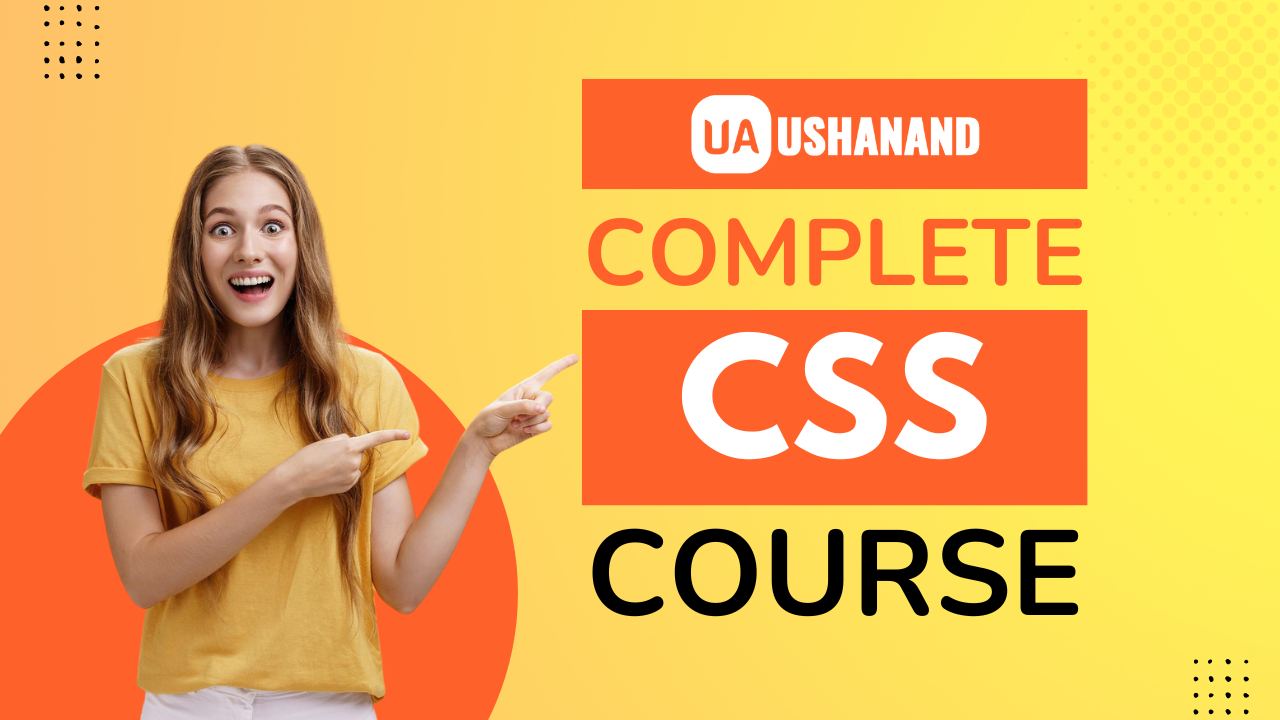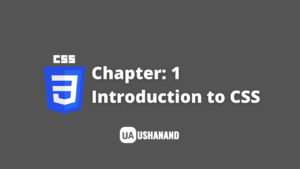CSS Tutorial Series: Welcome to Ushanand Infotech Solutions, Now we will discuss about CSS Tutorial Series. CSS is used to control the style of a web document in a simple and easy way. Please Read & Learn All Articles of CSS Tutorial Series.
CSS is an abbreviation for “cascading style sheet“. It covers both the tutorials CSS1, CSS2 and CSS3 versions and has a complete understanding of CSS, ranging from basics to advanced concepts.
Why learn CSS?
Cascading style sheets, known as CSS, are a simple design language intended to simplify the process of providing web pages.
When they are working in the web development domain, CSS is essential for students and working professionals to become a great software engineer. I will list some of the key benefits of learning CSS:
- Create Stunning Web Site: CSS handles the look and feel of a web page. Using CSS, you can select the layout design, the color of the text, the style of the fonts, the spacing between paragraphs, how to size and shape the columns, layout diagrams or colors that are used for different images and screen sizes. Huh. . Changes in performance can be controlled. As well as other types of effects.
- Become a web designer: If you want to start a career as a professional web designer, designing HTML and CSS is a must have skill.
- Control Web: CSS is easy to learn and understand but it provides powerful control over the presentation of an HTML document. Typically, CSS is combined with the markup languages HTML or XHTML.
- Learn other languages: Once you understand the basics of HTML and CSS, it becomes easier to understand other related technologies such as JavaScript, php, or Angular.
For Example:
<!DOCTYPE html>
<html>
<head>
<title>This is document title</title>
<style>
h1 {
color: #36CFFF;
}
</style>
</head>
<body>
<h1>Hello World!</h1>
</body>
</html>
Just to give you a little excitement about CSS, I am going to give you a small traditional CSS Hello World program, you can try it using the demo link.
Read Also: HTML Tutorial Series
Also Visit: Best SEO Expert in India
CSS Tutorial Series
| Chapter 1 | Introduction to CSS | Read Now |
| Chapter 2 | CSS Syntax and Inclusion | Read Now |
| Chapter 3 | CSS Measurement Units | Read Now |
| Chapter 4 | CSS Colors and Backgrounds | Read Now |
| Chapter 5 | CSS Fonts and Text | Read Now |
| Chapter 6 | CSS Images | Read Now |
| Chapter 7 | CSS Links | Read Now |
| Chapter 8 | CSS Tables and Lists | Read Now |
| Chapter 9 | CSS Borders | Read Now |
| Chapter 10 | CSS Margins and Padding | Read Now |
| Chapter 11 | CSS Cursors | Read Now |
| Chapter 12 | CSS Outlines | Read Now |
| Chapter 13 | CSS Dimension | Read Now |
| Chapter 14 | CSS Scrollbars | Read Now |
| Chapter 15 | CSS Responsive Web Design | Read Now |
CSS Advanced Tutorial Series
| Chapter 16 | CSS Visibility | Read Now |
| Chapter 17 | CSS Positioning | Read Now |
| Chapter 18 | CSS Layers | Read Now |
| Chapter 19 | CSS Pseudo Classes | Read Now |
| Chapter 20 | CSS Pseudo Elements | Read Now |
| Chapter 21 | CSS @ Rules | Read Now |
| Chapter 22 | CSS Text Effects | Read Now |
| Chapter 23 | CSS Media Types | Read Now |
| Chapter 24 | CSS Paged Media | Read Now |
| Chapter 25 | CSS Aural Media | Read Now |
| Chapter 26 | CSS Printing | Read Now |
| Chapter 27 | CSS Layouts | Read Now |
| Chapter 28 | CSS Validations | Read Now |
CSS3 Tutorial Series
| Chapter 29 | Rounded Corner | Read Now |
| Chapter 30 | Border Images | Read Now |
| Chapter 31 | Multi Background | Read Now |
| Chapter 32 | Learn Color | Read Now |
| Chapter 33 | Learn Gradients | Read Now |
| Chapter 34 | Learn Shadow | Read Now |
| Chapter 35 | Learn Text | Read Now |
| Chapter 36 | Learn Web font | Read Now |
| Chapter 37 | Learn 2d transform | Read Now |
| Chapter 38 | Learn 3d transform | Read Now |
| Chapter 39 | Learn Animation | Read Now |
| Chapter 40 | Learn Multi columns | Read Now |
| Chapter 41 | Learn User Interface | Read Now |
CSS Tutorial Series
This CSS Tutorial Series will help both students as well as professionals who want to make their website or personal blog more attractive.
You should be familiar with:
- Basic word processing using any text editor.
- How to create directories and files.
- How to navigate through different directories.
- Internet browsing using popular browsers such as Internet Explorer or Firefox.
- Develop simple web pages using HTML or XHTML.
If you are new to HTML and XHTML, we would suggest you to go through our HTML tutorial Series first.



